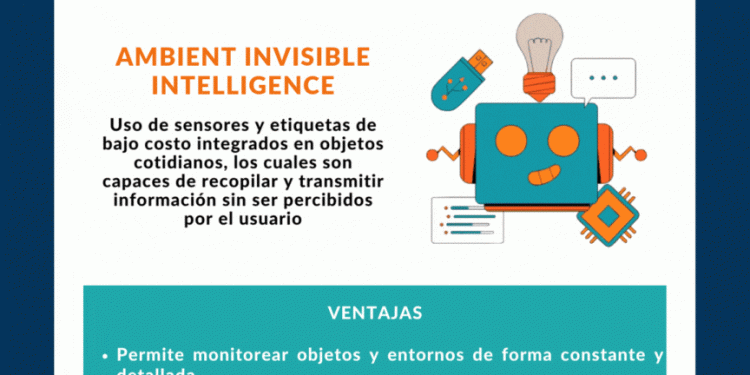What is Ambient Invisible Intelligence?
Ambient Invisible Intelligence refers to the seamless integration of artificial intelligence (AI) into our environments in ways that are subtle, unobtrusive, and almost invisible to users. Rather than overt, direct interactions (like typing commands or tapping apps), this kind of AI anticipates needs and acts quietly in the background.
Key Features:
- Context-Aware: It understands your environment, preferences, and behaviors to provide relevant responses.
- Seamless Integration: It blends naturally with the surroundings—like smart lighting that adjusts automatically or office systems that adapt to your work style.
- Autonomous and Proactive: It predicts what you need before you even ask.
How Does it Work?
- Sensors and IoT Devices: Collect data on your location, activities, and environment.
- Machine Learning and AI: Analyze data in real-time to understand patterns and predict actions.
- Human-Centric Design: Focuses on user comfort and experience—no clunky interfaces or overwhelming prompts.
Examples and Applications:
- Smart Homes:
- Lights, heating, and security systems that adjust automatically based on occupancy, time of day, and habits.
- Voice assistants that respond to natural conversations and adjust to your schedule.
- Workspaces:
- Office environments that adapt lighting and noise levels based on the number of people present.
- Intelligent scheduling and reminders that don’t just react to commands but anticipate your needs.
- Healthcare:
- Remote monitoring systems that track patient health data and provide early warnings if something seems off.
- Personalized care environments that adapt to individual patient preferences and needs.
- Retail:
- In-store experiences that adjust displays and promotions based on customer behavior.
- Seamless checkouts where sensors and AI handle transactions in the background.
Benefits:
- Convenience and Comfort: Everything works together smoothly without constant user input.
- Energy Efficiency: Systems that automatically adjust lighting, heating, and other resources to save energy.
- Personalization: Experiences tailored to your preferences without requiring manual settings.
Challenges:
- Privacy and Security: Constant data collection and AI decision-making raise concerns about surveillance and misuse.
- Transparency: Users need to understand how decisions are made to build trust.
- Interoperability: Different devices and systems need to work together seamlessly for a truly ambient experience.
The Future:
As Ambient Invisible Intelligence evolves, it promises to make our interactions with technology more natural and intuitive. It represents a shift from explicit commands to environments that simply “know” and adjust—an exciting step towards smarter living and working spaces.
This kind of AI might not always be seen, but it’s designed to be felt—creating a world that adapts to you instead of the other way around. Want to see how this is used in real products today or how it might expand in the future? Let me know! 🚀✨Tools
ChatGPT can make mistakes. Check imp
































































